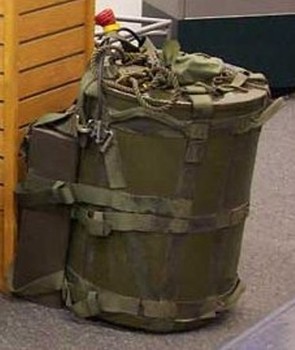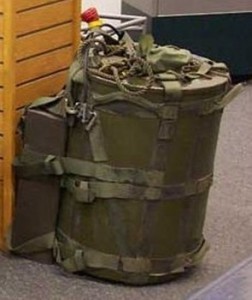
A new FAS Special Report – Non-Strategic Nuclear Weapons – concludes that Russia and the United States combined possess an estimated 2,760 non-strategic nuclear weapons in their military stockpiles. Another 2,000-3,000 weapons have been retired and are awaiting dismantlement. It should be noted that the stockpiles is enough to destroy every major city in the world, several times over.
Non Strategic Nuclear weapons – these weapons are often referred to as “battlefield” nuclear weapons, “mini-nukes,” “suitcase nukes” or “nonstrategic” nuclear weapons. Tactical nuclear weapons so called pose a unique threat to the safety of everyone. They are relatively portable, and many are stored in countries without adequate oversight and security, leaving them vulnerable to theft or misappropriation.
This threat was only made more real after 9/11/2001 when terrorists made their desire to obtain and use nuclear weapons clear, and there was a growing chorus of military experts and analysts suggesting that the United States use tactical nuclear weapons in retaliation for terrorist attacks.
See report: http://www.fas.org/_docs/Non_Strategic_Nuclear_Weapons.pdf .
The report comes just weeks before 28 NATO member countries convene in Chicago on 20-21 May to approve the conclusions of a year-long “Deterrence and Defense Posture Review” (DDPR). Among other issues, the review will determine the number and role of the U.S. non-strategic nuclear weapons deployed in Europe and how NATO might work to reduce its nuclear posture and overstock of nuclear weapons, as well as Russia’s inventory of such dangerous weapons in the future…
This is seen as critically important for a new START or Strategic Arms Limitation Treaty…between the US and Russia.
Part of the problem is that there is “no universal definition” of what a non-strategic nuclear weapon is. During the Cold War, a nuclear weapon was generally considered to be non-strategic (or tactical) if it had a much shorter range than strategic weapons and was intended
for battlefield use in a theater of operation. Some consider a nuclear weapon non-strategic if it is not covered by strategic arms control treaties. Some countries consider all nuclear weapons strategic; the French government, for example, defines its air-delivered cruise missile as strategic even though the aircraft do not have inter-continental range. The Department of
Defense Dictionary of Military and Associated Terms defines non-strategic nuclear forces as: “Those nuclear-capable forces located in an operational area with a capability to employ nuclear weapons by land, sea, or air forces against opposing forces, supporting installations, or facilities. Such forces may be employed, when authorized by competent authority, to
support operations that contribute to the accomplishment of the commander’s mission within the theater of operations.” U.S. Department of Defense, Joint Chiefs of Staff, Department of Defense Dictionary of Military and Associated Terms, Joint Publication 1-02, November 8, 2010 (as amended through October 15, 2011), p. 241, http://www.dtic.mil/doctrine/new_pubs/jp1_02.pfd.
Non-strategic nuclear weapons were designed to fight nuclear battles during the Cold War, yet both NATO and Russia continue to attribute great importance to such weapons of global destruction and modernize their remaining forces.
Nuclear weapons are also getting smaller but packing a much larger bang for the buck…
The report says that unilateral reductions have been the most effective means to reduce the number and role of non-strategic nuclear weapons and that additional unilateral reductions remain an important way to reduce the remaining forces. But, it was noted that Russia, the United States and NATO “cloak” or hides their non-strategic nuclear forces in a veil of, what the report calls “outdated and unnecessary secrecy”. That new initiatives are needed to increase transparency of such forces, so each side can provide assurances to each other that all the weapons are being counter properly.
Lack of transparency fuels “mistrust” the report suggests and the concerns of Russian military that NATO countries have about delays that have been used to prevent a withdrawal of the remaining U.S. nuclear weapons from Europe.
The DDPR is expected to endorse the current deployment in Europe, while Russia will object to the so called US missile shield which could be used against Russia in the event of a conflict. Russia will also provide irrefutable facts clearlyindicate that the system is targeting Russia, not Iran. The US continues to dispute this for some reason (see article: Russia to make hi-tech case against NATO missile shieldhttp://news.yahoo.com/russia-hi-tech-case-against-nato-missile-shield-185427940.html ).
The report, interestingly enough, concludes that non-strategic nuclear weapons are neither the reason nor the solution for Europe’s security issues today but that lack of political leadership has allowed bureaucrats to give these weapons a legitimacy they don’t possess and shouldn’t have. This is something the US has been doing for years, as it bullies and acts out the role as the “world’s policeman” (see article: No ‘Flexibility’ on Missile Defense – Republican Senatorshttp://en.rian.ru/world/20120328/172432859.html ).
The response to the US missile shield in Europe is predictable enough, Russian is being forced to deploy missiles to target the shield (see: Russia threatens nuclear build-up over U.S. missile shieldhttp://articles.cnn.com/2011-05-18/world/russia.nuclear.missiles_1_missile-defense-missile-shield-europe-based-system?_s=PM:WORLD ).
Other countries mentioned in the report include:
- France also possesses approximately 50 short-range cruise missiles that fall into thenon-strategic category, although the French government considers all its nuclear weapons to be strategic.
- China might also have developed and tested non-strategic nuclear weapons, although there is little evidence that they deploy any today.
- Pakistan appears to be developing short-range nuclear weapons that could have nonstrategic nuclear missions.
- India also has short-range Prithvi and Dhanush missiles that have nuclear capability, as well as nuclear bombs for fighter-bombers.
- Israel has an inventory of nuclear bombs for delivery by fighter-bombers that also fall into the short-range or non-strategic category.
The report is pretty scary to read, and even scarier to report on. No one at the Pentagon would discuss it on or off the record and the Russian Ministry of Defense has not replied to emails asking for comment on this issue of tactical nuclear weapons.

